Chapter 15
Mini Marines of China
By Jennifer Castro, Cultural and Material History Curator
Featured artifacts: Coat, Uniform, Officer, Child’s (2010.2. 1); Coat, Uniform, Enlisted, Child’s (2010.2. 2); Belt, Sam Browne, Child’s (2010.2.5); and Cap, Uniform, Officer, Child’s (2012.120.1)
In a 1947 book review of Letters of a Combat Marine, Lieutenant General Lewis B. “Chesty” Puller noted from his career experience that “it takes all sorts of people to be Marines.”[1] However, even the legendary Chesty Puller may have been surprised by the story that follows here.
Many American families have long held the men and women of the U.S. Marine Corps in high regard. It should therefore come as little surprise that they were also proud to allow their children to dress and emulate them. Some of the earliest documented children’s “Marine Corps” uniforms date from World War I and interwar period. These little “Mini Marines” wore their uniforms with pride and respect, in homage to those serving their nation. This is the story of two such children and their unusual “enlistment” in the Marine Corps in China in the 1930s.
Diplomatic Beginnings and Familial Bonds
Nelson Trusler Johnson served as U.S. minister plenipotentiary to China from 1928 to 1935 and as U.S. ambassador (or envoy) extraordinary to China from 1935 to 1941.[2] A newspaper story from the era described him as “[a] little portly of build, with thinning sandy hair.”[3] More significantly, as a diplomat, Johnson possessed the knowledge and experience of Chinese culture and politics that helped shape early twentieth-century U.S. policy in the Far East.
Johnson married Jane Beck of Cody, Wyoming, on 10 October 1931 in Tientsin (Tianjin), China. They had a son, Nelson Beck Johnson, soon after. The family lived in the city of Nanking (Nanjing). As a U.S. government minister, Johnson often made for an unusual sight on his bicycle, “unlimbering himself for the diplomatic duties of the day.”[4] On 25 September 1935, he was appointed as the U.S. ambassador to China. In addition to his promotion, his good fortune continued with the birth of his second child, Betty Jane Johnson, in 1941.
A Diplomat’s Mini Marines
On numerous occasions, China’s history of civil unrest and international incidents during the twentieth century resulted in the deployment of U.S. Marines to the Far East to protect American interests and citizens there. This made China a complex and high-stakes post for any American diplomat. However, Johnson’s knowledge and expertise of Chinese history, culture, and politics ensured a long period of work at the U.S. embassy, even with the turbulence within the country as well as the expanding Japanese occupation before the official outbreak of World War II.
The American Legation and the U.S. embassy were both located in the southwest corner of the Legation Quarter of Peking (Beijing). In 1935, this small slice of America in the Far East had nearly 500 Marines serving there, with their number increasing and decreasing depending on the level of civil unrest in the country.[5]
Ambassador Johnson’s two children, Nelson and Betty Jane, were both born in Peking and grew up in China. During one of their few visits to the United States, their grandfather was shocked to learn the children’s poor command of the English language. The children grew up speaking Chinese, due to the constant care of their two Chinese amahs (nursemaids).[6] The Johnson children were also heavily influenced by the presence of the local U.S. Marines. These China Marines were well respected and admired among the foreign legation for their dedication, professionalism, and military bearing. They also happened to enjoy playing with the ambassador’s children and humored their presence as a welcome distraction from service overseas.
Due to their children’s fascination with the well-dressed Marines, Johnson and his wife had a child-size Marine Corps noncommissioned officer uniform made for their son Nelson. The locally made costume was an exact miniature copy of a senior enlisted Marine’s dress uniform. It featured original Marine Corps buttons and collar devices, sergeant major chevrons, a white dress belt, and a uniform cap with the proper insignia. This same uniform was later worn by Nelson’s younger sister Betty Jane after he had outgrown the uniform.
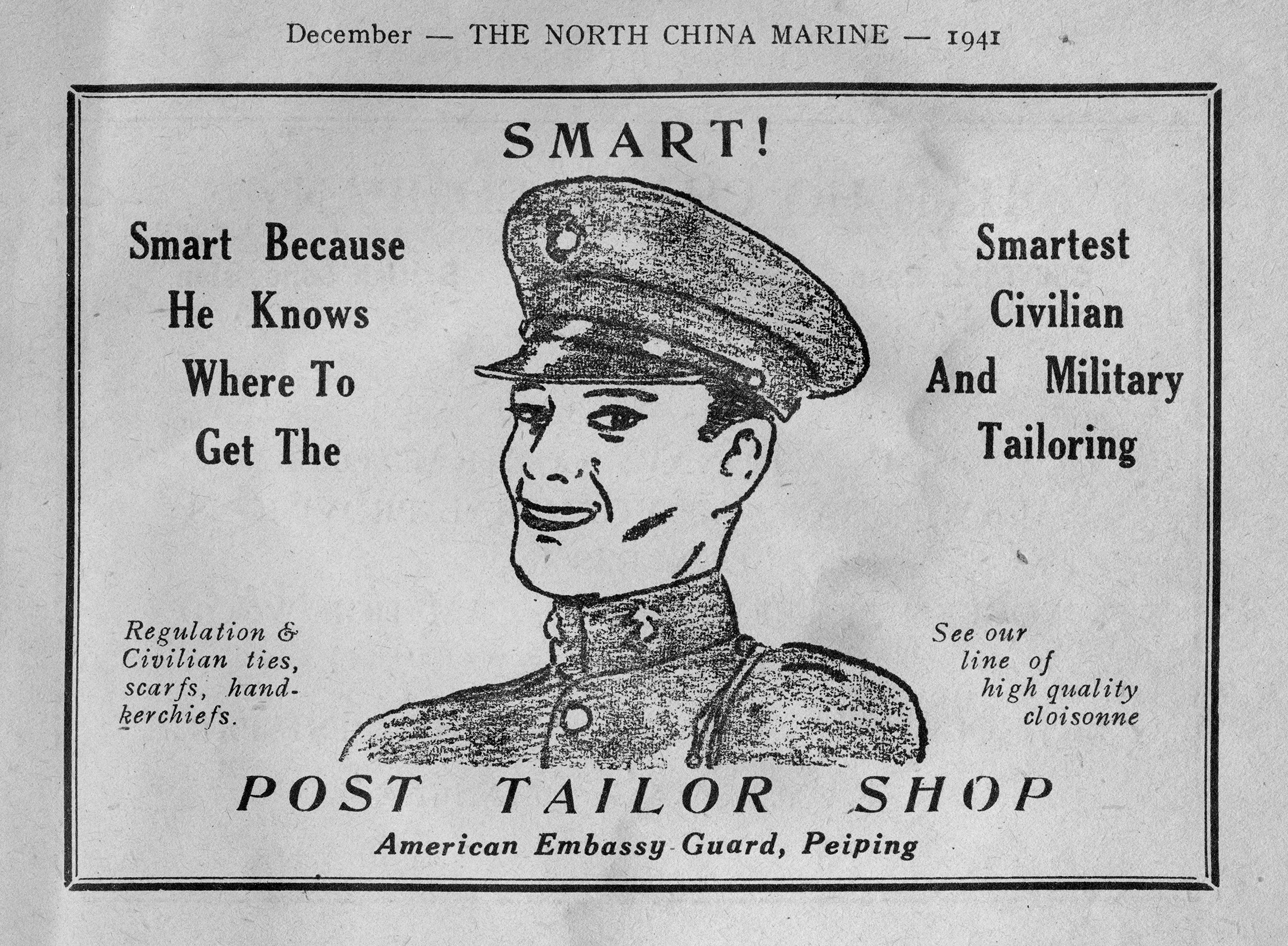
An advertisement for uniforms and civilian clothing at the Post Tailor Shop, American Embassy Guard, Peiping.
North China Marine Magazine 1, no. 6 (December 1941), 41.
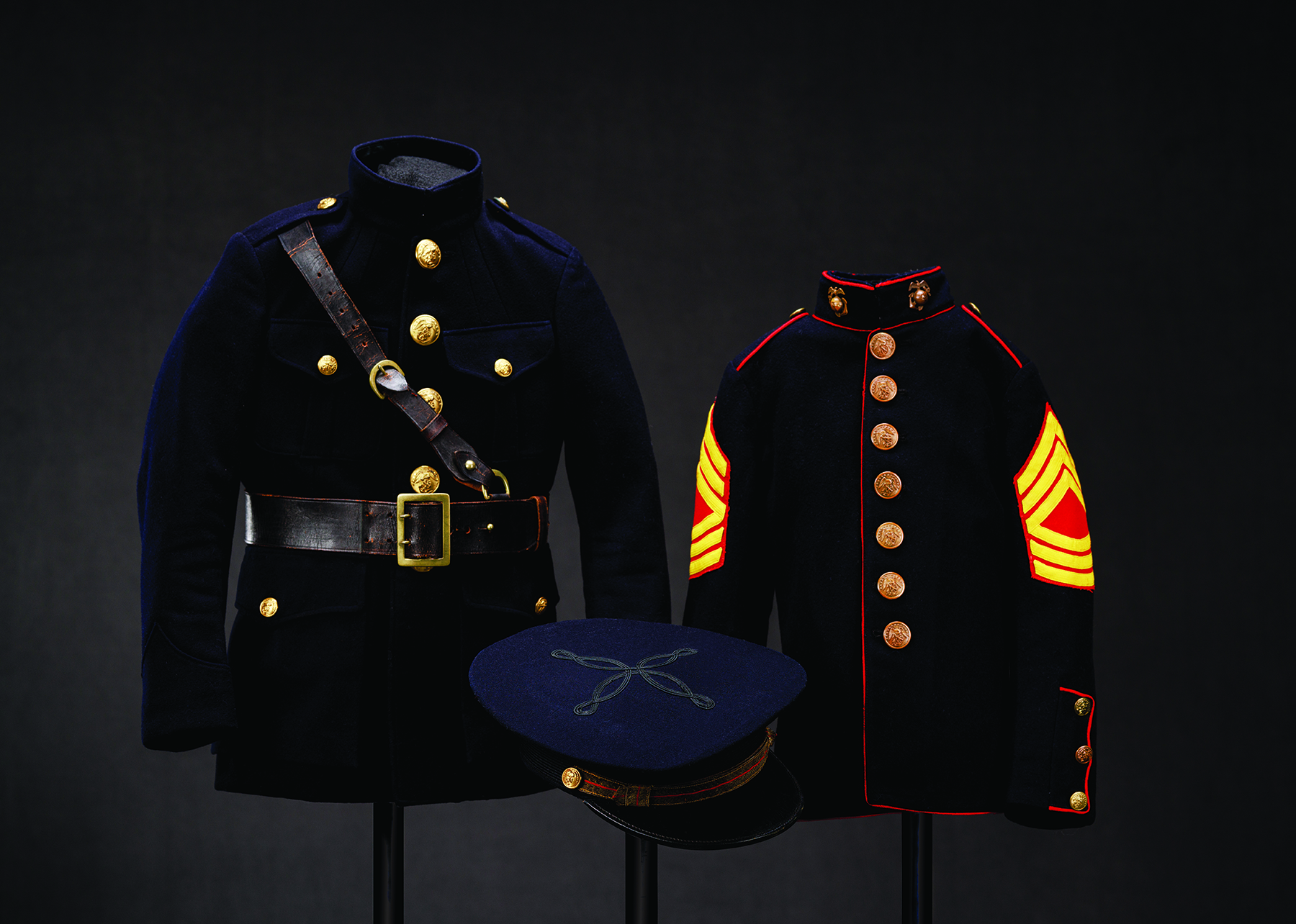
Child-size custom Marine Corps uniforms worn by Nelson and Betty Jane Johnson.
Photo by Jose Esquilin, Marine Corps University Press.
When Betty Jane was old enough to play Marine, the Johnson family next commissioned a complete, custom-tailored Marine officer dress blue uniform. This new uniform was even more detailed than the first, as it came equipped with a child-size leather Sam Browne belt and the appropriate jeweler grade officer insignia and ornamentation.
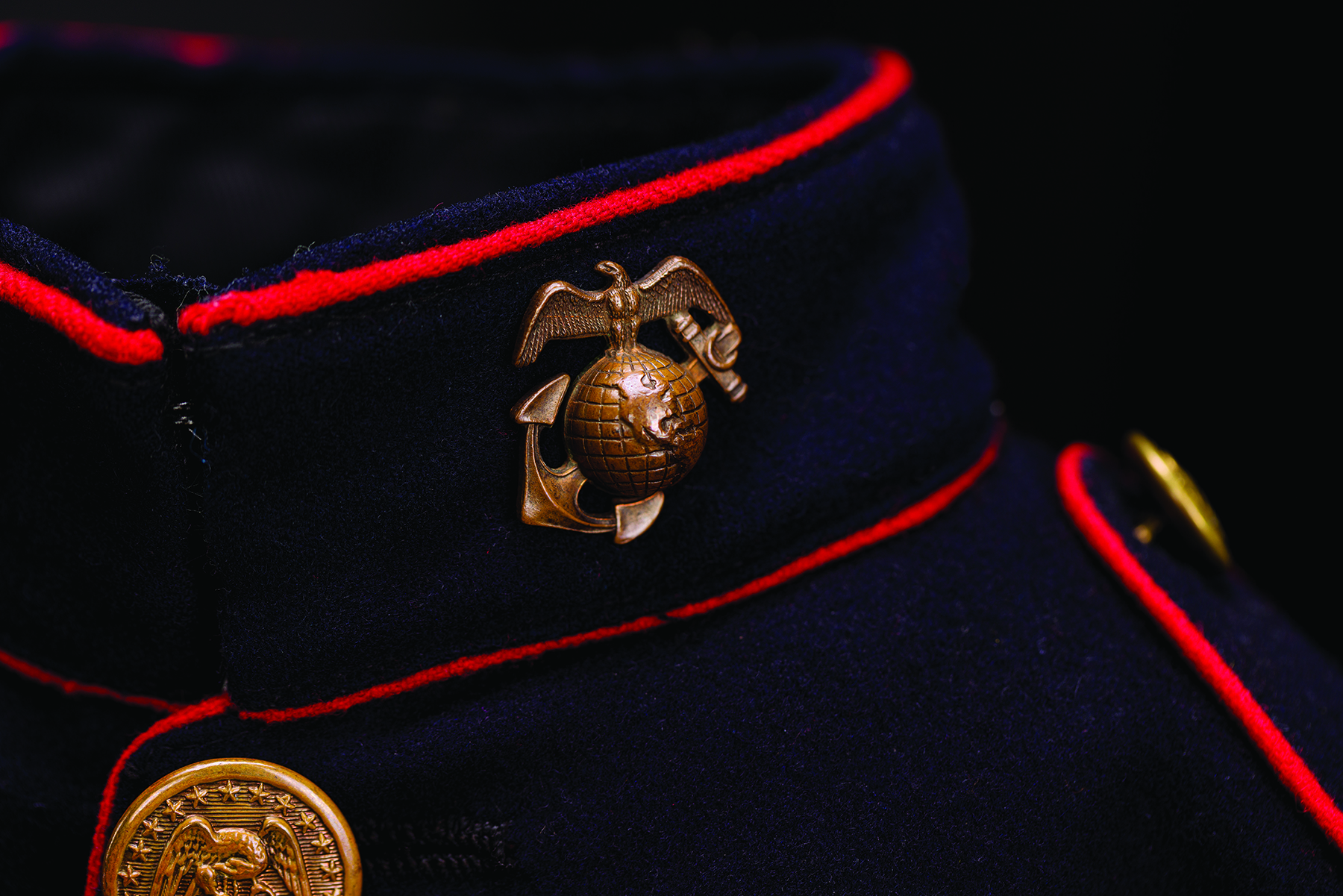
Detail of the enlisted collar ornament on the enlisted dress uniform worn by Betty Jane Gerber.
Photo by Jose Esquilin, Marine Corps University Press.
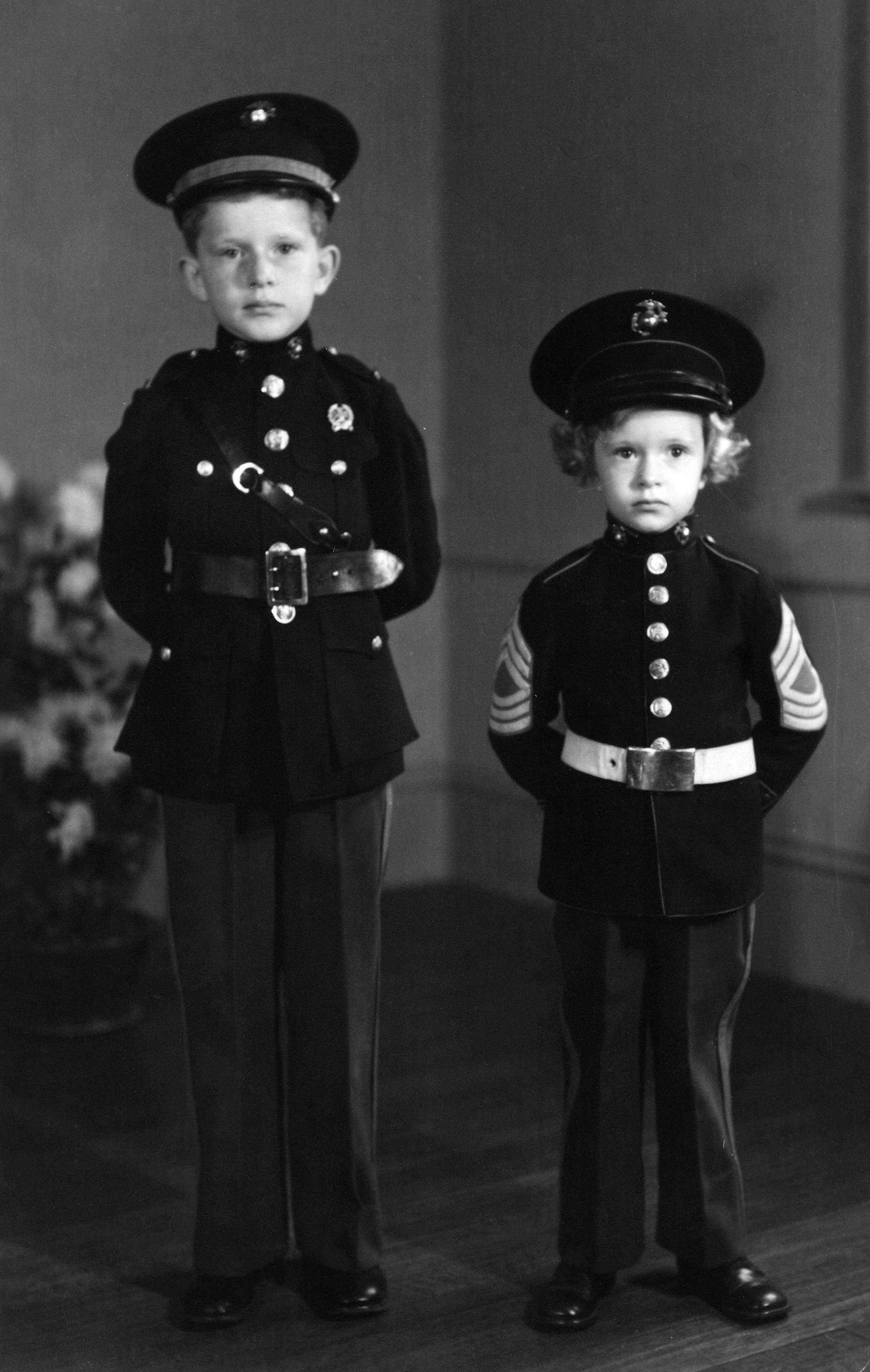
Nelson and Betty Jane Johnson wearing their custom-made Marine Corps uniforms.
Courtesy of Betty Jane Gerber.
The children’s military exploits were documented in Johnson family photographs. These images depict little “Sergeant Major” Betty Jane and “Lieutenant” Nelson wearing their uniforms during official parades and other Marine Corps events held in the Legation Quarter.
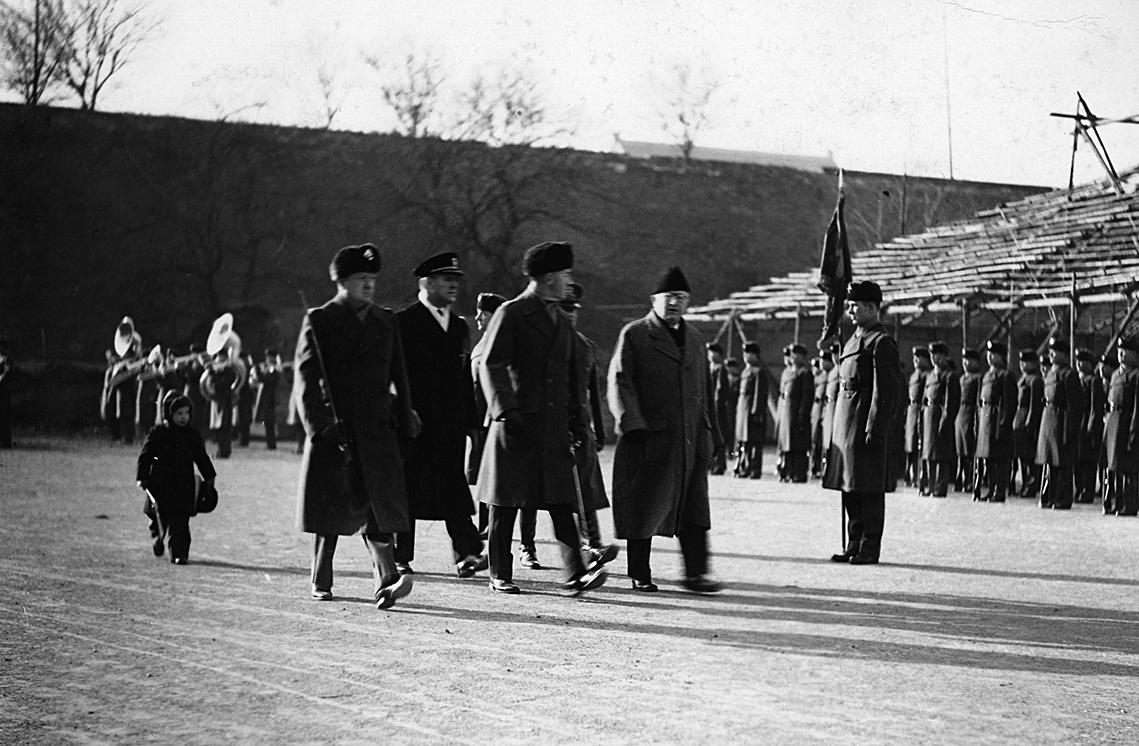
One of the two children of Ambassador Johnson following the footsteps of Marines during a review of troops.
Courtesy of Betty Jane Gerber.
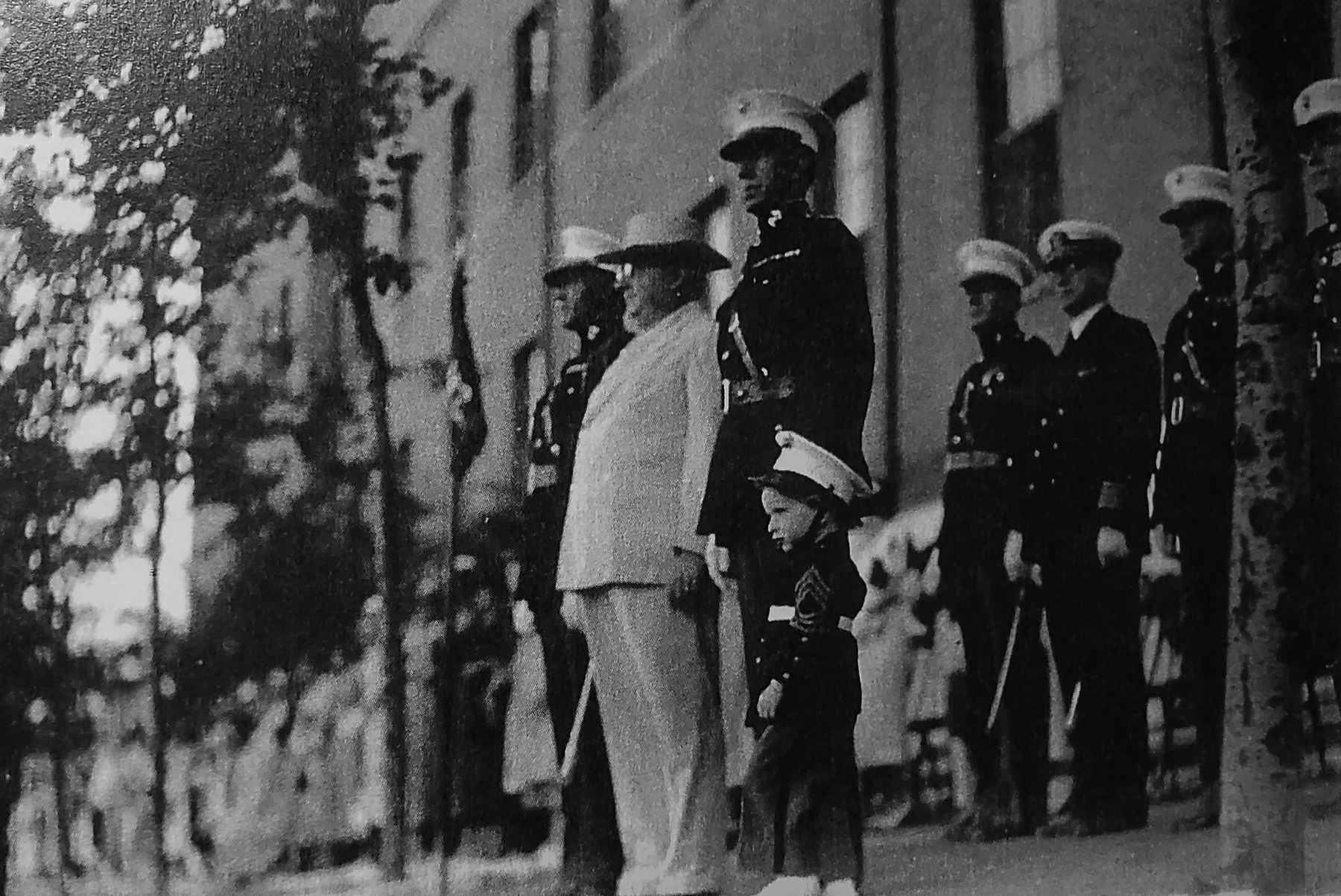
Nelson Johnson holding the hand of Col Presley M. Rixey during a parade in China.
Courtesy of Betty Jane Gerber.
The family’s love for the city’s Marines ran deep. Not content with just the dress uniforms, the family also purchased locally made China Marine fur hats for the children. These were the same beloved winter hats that their heroes wore. Family photographs dating to 1935 show Johnson standing in a white suit with Colonel Presley M. Rixey, holding the hand of a very young Nelson, during a parade with other Marine officers standing behind them. At the time, Rixey was serving as the commanding officer of the Marine detachment at the American Legation. Other family photographs show the children posing for pictures in their uniforms, marching in parades, and—in line with their father—participating in ceremonies alongside Marine officers during a review of troops on the legation grounds.
Hostilities Increase; War Begins
Ambassador Johnson’s family remained in Peking until tensions between the United States and Japan rose to unacceptable levels of concern. Like many Western citizens living in legation settlements, they would be evacuated in the months prior to the U.S. entry into World War II. Johnson was recalled soon after. The United States began redeploying elements of the 4th Marine Regiment from China to the Philippines in November 1941. Only a small group of Marines and diplomatic personal remained in China at the outbreak of war between the United States and Japan on 7 December 1941.
Desiring a less stressful and quieter post as well as to be reunited with his family, Johnson accepted a new job as U.S. ambassador to Australia in September 1941 and served there through 1945. While in Australia, the Johnson children accompanied their parents to Melbourne. They were reunited with their Marine heroes in January 1943, when the 1st Marine Division arrived in Australia for nine months of recuperation after intense combat operations on the island of Guadalcanal in the South Pacific. Ambassador Johnson and the division’s commanding officer, Major General Alexander A. Vandegrift, met together while in Melbourne. The two men knew each other from their years of service in China. In 1935, Vandegrift had reported to Peking as a lieutenant colonel and served as executive officer of Headquarters Detachment, Marine Detachment at the U.S. embassy in Peking. He served there until departing as a colonel in the spring of 1937. During their reacquaintance in Australia, Vandegrift appointed Betty Jane as an official private first class and Nelson as a sergeant major of the Marine Corps. Each of the ambassador’s children received their own Marine Corps promotion document, stating their permanent appointment for “For Duty with the First Marine Division only.”
Following the war’s end, the Johnson family returned to Washington, DC, where Johnson went on to serve as the secretary general of the Far Eastern Commission, overseeing the occupation of Japan after the end of World War II.
Endnotes
[1] Lt David Tucker Brown Jr., USMCR, Letters of a Combat Marine (Chapel Hill: University of North Carolina Press, 1947).
[2] “Veteran in China Now Ambassador of U.S.: Mr. Nelson T. Johnson Presents His Credentials: Exchange of Mutual Good Wishes,” North China Herald, 25 September 1935.
[3] “Faith of American Diplomats,” Brooklyn Daily Eagle, 14 August 1928.
[4] “Envoy to China Is Bicycle Fan,” Charlotte Observer, 16 June 1935.
[5] “Marine Detachment, American Legation, Peiping, China, 1–31 January 1935,” Muster Rolls of Officers and Enlisted Men of the U.S. Marine Corps, 1798–1958 (Archives Branch, Marine Corps History Division, Quantico, VA).
[6] Betty Jane Gerber, “Afterword,” in George W. T. Beck, Beckoning Frontiers: The Memoir of a Wyoming Entrepreneur, ed. Lynn J. House and Jeremy M. Johnston (Lincoln: University of Nebraska Press, 2020), 261.